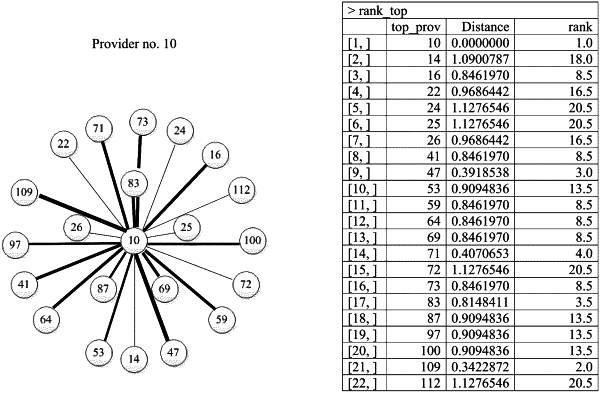| CPC G16H 10/60 (2018.01) [G06F 16/24578 (2019.01); G06F 16/285 (2019.01); G06F 40/205 (2020.01); G16H 50/70 (2018.01)] | 11 Claims |

|
1. A method for extracting data from a plurality of electronic data repositories to provide provider and patient data similarity scoring, comprising:
encoding a plurality of electronic problem lists stored using one or more electronic health record ontologies on a networked computer system for a respective plurality of patients with concepts from a common electronic health record ontology, wherein the electronic problem lists are stored using the one or more electronic health record ontologies so as to be used with a respective electronic health record software package, wherein the plurality of electronic data repositories are maintained by a plurality of providers and wherein each of the patients is attributable to a respective provider;
parsing the concepts into a plurality of clusters or categories of concept groupings;
determining, for each of the providers and for all of the problems encoded to a respective concept within a cluster or category of concept groupings, a total number of patients that have at least one problem in the cluster or category of concept groupings, wherein a patient is associated with the cluster or category of concept groupings according to whether the patient has at least one problem in the cluster or category;
iterating the determining step for each of the remaining clusters or categories of concept groupings;
calculating, for each pair of providers, a distance between the providers using the results of the determining and iterating steps; and
generating, on a display of a computer, a first user interface arranging at least a subset of the providers into one or more groups reflected by the plurality of clusters or categories, the first user interface providing, for each provider in the subset of providers, a visual representation of a closest match to that provider based on the distance between the providers,
wherein the first user interface is selectable to generate, on the display, a second user interface in which a provider selected from the first user interface is depicted in conjunction with one or more of the other providers calculated to be closest to the selected provider, along with visual representations of a degree of closeness between those providers and the selected provider.
|